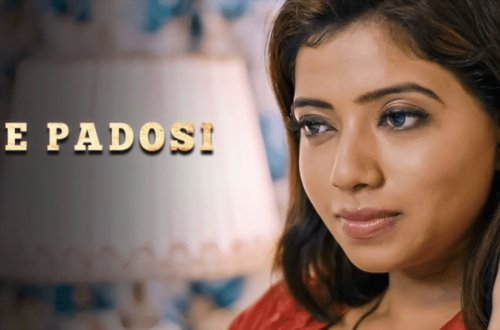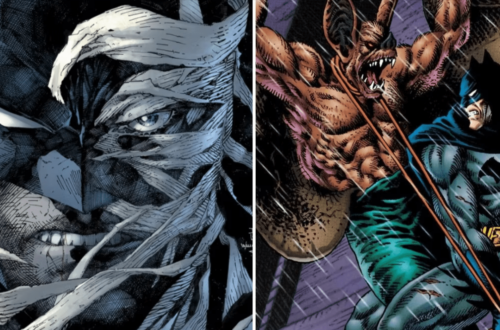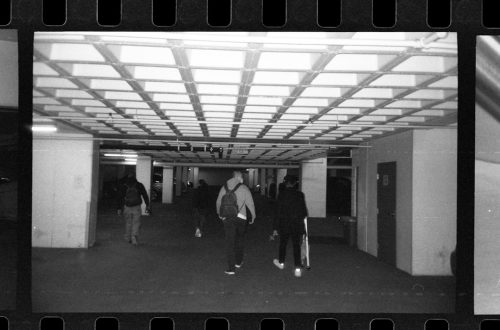Thriller films are a genre of cinema that aims to elicit excitement, suspense, and anticipation in the audience. These films often revolve around a central character or characters who find themselves in a high-stakes, life-threatening situation. The genre is known for its ability to keep viewers on the edge of their seats, as they are taken on a rollercoaster ride of emotions and tension. Thriller films often incorporate elements of mystery, crime, and psychological drama, creating a sense of unease and unpredictability that captivates audiences. The genre has been a staple of the film industry for decades, with countless classic and iconic films that have left a lasting impact on audiences around the world.
Thriller films are characterized by their ability to keep audiences guessing and engaged throughout the entire duration of the film. They often feature complex and multi-layered plots, filled with twists and turns that keep viewers on their toes. The genre is also known for its ability to create a sense of unease and tension through the use of atmospheric cinematography, haunting musical scores, and expertly crafted suspenseful sequences. Thriller films often explore themes of paranoia, fear, and the darker aspects of human nature, making them a compelling and thought-provoking genre for audiences to explore.
Key Takeaways
- Thriller films are a popular genre known for their ability to create suspense and tension, keeping audiences on the edge of their seats.
- The art of suspense and tension building in thriller films involves carefully pacing the story, using music and cinematography to create a sense of unease and anticipation.
- Psychological mind games in thriller films often involve complex characters and moral dilemmas, adding depth and intrigue to the story.
- Unpredictable plot twists and surprise endings are a hallmark of thriller films, keeping audiences guessing until the very end.
- The role of misdirection and red herrings in thriller films adds to the suspense by leading audiences down false paths and keeping them guessing about the true outcome.
The Art of Suspense and Tension Building
One of the key elements of thriller films is the art of suspense and tension building. This is achieved through a variety of techniques, including pacing, editing, and cinematography. Directors often use slow-burning tension to create a sense of unease and anticipation in the audience, gradually building up to a climactic and thrilling conclusion. This can be achieved through the use of long takes, where the camera lingers on a particular scene or character, creating a sense of unease and anticipation. Additionally, the use of tight framing and close-ups can create a feeling of claustrophobia and intensity, drawing the audience into the heart of the action.
Furthermore, the use of sound and music is crucial in building tension in thriller films. A haunting musical score can create an atmosphere of dread and anticipation, heightening the emotional impact of key scenes. Sound design also plays a crucial role in creating tension, with the use of ambient noise and subtle cues adding to the overall sense of unease. The art of suspense and tension building is a delicate balance that requires skillful direction and storytelling, as well as a deep understanding of audience psychology. When done effectively, it can create an immersive and thrilling experience for viewers, leaving them on the edge of their seats until the very end.
Psychological Mind Games in Thriller Films
Thriller films often delve into the realm of psychological mind games, exploring the inner workings of the human psyche and the darker aspects of human nature. This can be seen in the portrayal of complex and morally ambiguous characters, who engage in manipulative and deceptive behavior to achieve their goals. The genre often explores themes of paranoia, obsession, and psychological trauma, creating a sense of unease and unpredictability that keeps audiences engaged. Psychological mind games are often used to create tension and suspense, as characters navigate through a web of lies and deceit, never knowing who they can trust.
Furthermore, thriller films often play with the audience’s perception of reality, blurring the lines between truth and illusion. This can be achieved through the use of unreliable narrators, dream sequences, and flashbacks that challenge the audience’s understanding of the story. By playing with the audience’s expectations and beliefs, thriller films create a sense of disorientation and uncertainty that adds to the overall tension and suspense. The exploration of psychological mind games in thriller films adds depth and complexity to the genre, creating thought-provoking narratives that linger in the minds of viewers long after the credits roll.
Unpredictable Plot Twists and Surprise Endings
| Movie Title | Plot Twist | Surprise Ending |
|---|---|---|
| The Sixth Sense | The protagonist is actually dead | The psychiatrist is also dead |
| Fight Club | The protagonist and Tyler Durden are the same person | The buildings are blown up |
| The Usual Suspects | Keyser Söze’s true identity is revealed | Verbal Kint’s escape and transformation |
One of the hallmarks of thriller films is their ability to deliver unpredictable plot twists and surprise endings that leave audiences stunned and amazed. These twists often subvert audience expectations, challenging their assumptions about the story and its characters. The best plot twists are those that are both surprising and logical, adding new layers of meaning to the narrative while also tying up loose ends in a satisfying manner. When executed effectively, plot twists can elevate a thriller film from being merely entertaining to being truly memorable and thought-provoking.
Furthermore, surprise endings are another key element of thriller films that keep audiences engaged until the very last moment. These endings often reveal new information or perspectives that completely change the audience’s understanding of the story. Whether it’s a shocking revelation about a character’s true motives or an unexpected turn of events that recontextualizes everything that came before, surprise endings add an extra layer of excitement and intrigue to thriller films. When done well, these endings can leave a lasting impact on audiences, sparking discussions and theories long after the film has ended.
The Role of Misdirection and Red Herrings
Misdirection and red herrings are essential tools in the arsenal of thriller films, used to keep audiences guessing and engaged throughout the story. These elements are designed to lead viewers down false paths, creating a sense of uncertainty and doubt about the true nature of the narrative. By planting seeds of doubt and suspicion, filmmakers can keep audiences on their toes, never quite sure what to believe or who to trust. This creates a sense of unease and unpredictability that is central to the thrill of watching these films.
Misdirection can take many forms in thriller films, from misleading dialogue to deceptive visual cues that lead audiences to draw false conclusions about the story. Red herrings are also commonly used to divert attention away from key plot points or character motivations, creating an air of mystery and intrigue that keeps audiences engaged. When used effectively, misdirection and red herrings can add depth and complexity to a thriller film’s narrative, creating a sense of uncertainty that keeps audiences guessing until the very end.
Iconic Thriller Films with Memorable Twists

The history of cinema is filled with iconic thriller films that have left a lasting impact on audiences around the world. These films are known for their memorable twists and surprise endings that have become legendary in the world of cinema. Alfred Hitchcock’s “Psycho” is one such example, featuring a shocking plot twist that completely redefines the audience’s understanding of the story. The film’s infamous shower scene is one of the most iconic moments in cinematic history, leaving audiences stunned by its unexpected brutality.
Another classic thriller film with a memorable twist is “The Sixth Sense,” directed by M. Night Shyamalan. The film’s surprise ending completely changes the audience’s perception of the story, revealing new layers of meaning that add depth to the narrative. The twist has become one of the most famous in film history, solidifying “The Sixth Sense” as a timeless classic in the thriller genre. These iconic films have set a high standard for storytelling in thrillers, inspiring countless filmmakers to create their own memorable twists and surprise endings.
The Evolution of Thriller Films and the Future of the Genre
Over the years, thriller films have evolved to reflect changes in society and advancements in filmmaking technology. While classic thrillers like “Psycho” relied on practical effects and suspenseful storytelling, modern thrillers have embraced new techniques such as CGI and immersive sound design to create even more intense and thrilling experiences for audiences. Additionally, filmmakers have pushed boundaries by exploring new subgenres within thrillers, such as psychological thrillers and techno-thrillers, which offer fresh perspectives on classic themes.
Looking ahead, it’s clear that thriller films will continue to captivate audiences with their ability to create tension, suspense, and excitement. As technology continues to advance, filmmakers will have even more tools at their disposal to craft immersive and thrilling experiences for viewers. Furthermore, as societal fears and anxieties evolve, thriller films will continue to serve as a reflection of our collective fears and uncertainties, offering audiences an outlet to explore these emotions in a safe and controlled environment.
In conclusion, thriller films have long been a staple of cinema, captivating audiences with their ability to create tension, suspense, and excitement. Through expertly crafted suspenseful sequences, unpredictable plot twists, and psychological mind games, these films keep viewers on the edge of their seats until the very end. As the genre continues to evolve and adapt to new technologies and societal changes, it’s clear that thriller films will remain a timeless and compelling genre for audiences around the world.
If you’re a fan of thriller films that keep you guessing, you’ll definitely want to check out the article “Top 10 Mind-Bending Thrillers That Will Leave You Guessing” on cheesefilm.com. This article features a list of some of the most suspenseful and unpredictable thriller movies that will keep you on the edge of your seat. Whether you’re a fan of psychological thrillers or crime mysteries, this article has something for everyone looking for a thrilling movie experience.
FAQs
What are thriller films?
Thriller films are a genre of movies that are designed to elicit feelings of excitement, tension, and suspense in the audience. They often involve elements of mystery, danger, and psychological thrills.
What makes a thriller film keep you guessing?
A thriller film that keeps you guessing typically involves a complex and unpredictable plot, with unexpected twists and turns that keep the audience on the edge of their seats. These films often feature unreliable narrators, ambiguous characters, and multiple potential outcomes.
What are some examples of thriller films that keep you guessing?
Some examples of thriller films that keep you guessing include “Gone Girl,” “The Sixth Sense,” “Shutter Island,” “Prisoners,” “The Prestige,” “Se7en,” “Memento,” “The Usual Suspects,” and “Oldboy.”
What are some common themes in thriller films that keep you guessing?
Common themes in thriller films that keep you guessing include deception, betrayal, manipulation, psychological warfare, and moral ambiguity. These films often explore the darker aspects of human nature and challenge the audience’s perceptions of reality.
What are some techniques used in thriller films to keep the audience guessing?
Techniques used in thriller films to keep the audience guessing include non-linear storytelling, unreliable narration, red herrings, misdirection, and the use of ambiguous or morally complex characters. These techniques create a sense of uncertainty and suspense that keeps the audience engaged.





